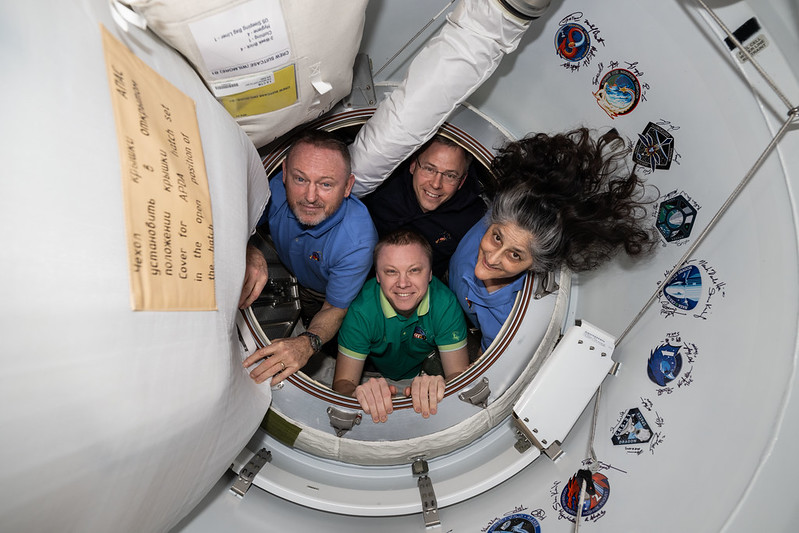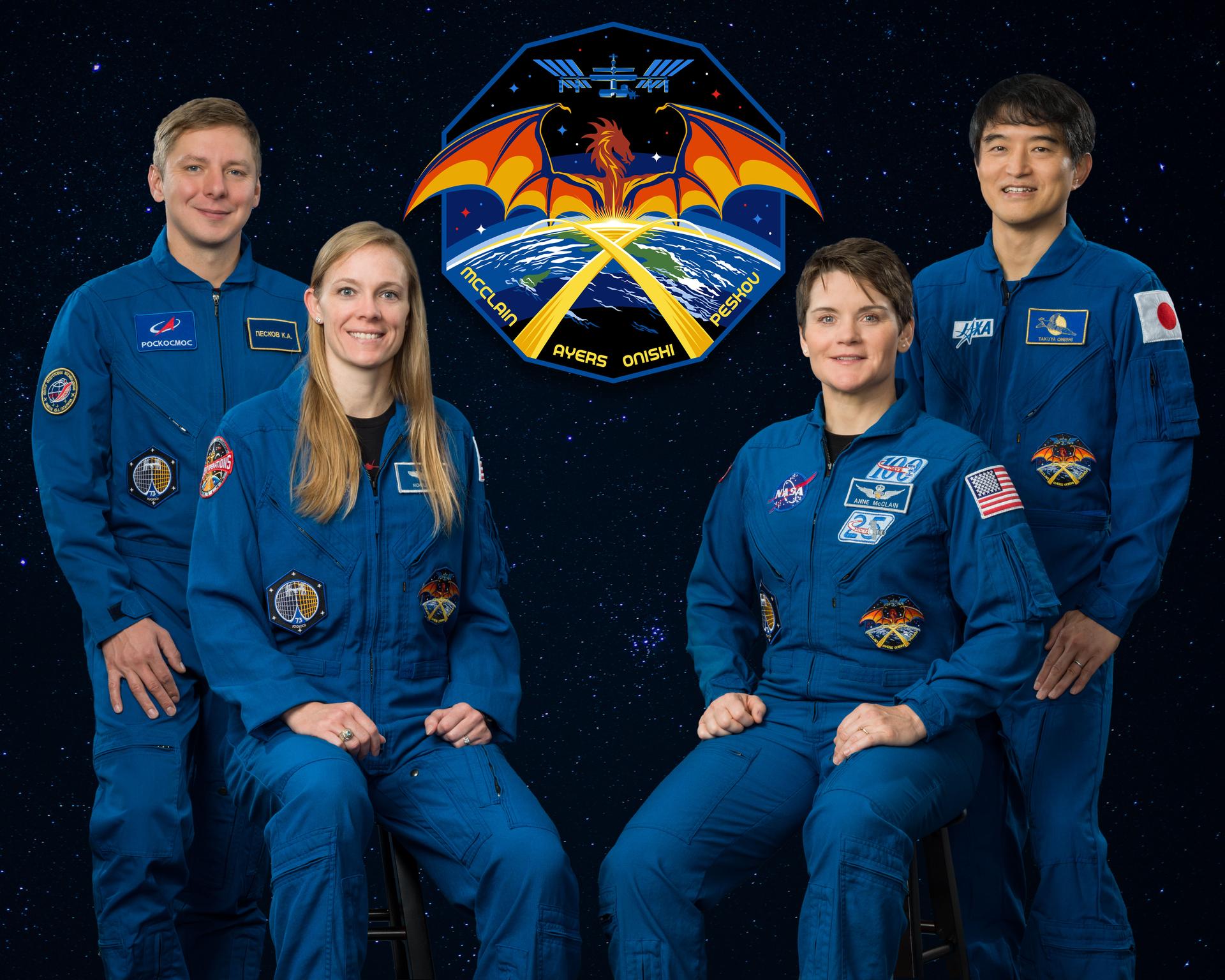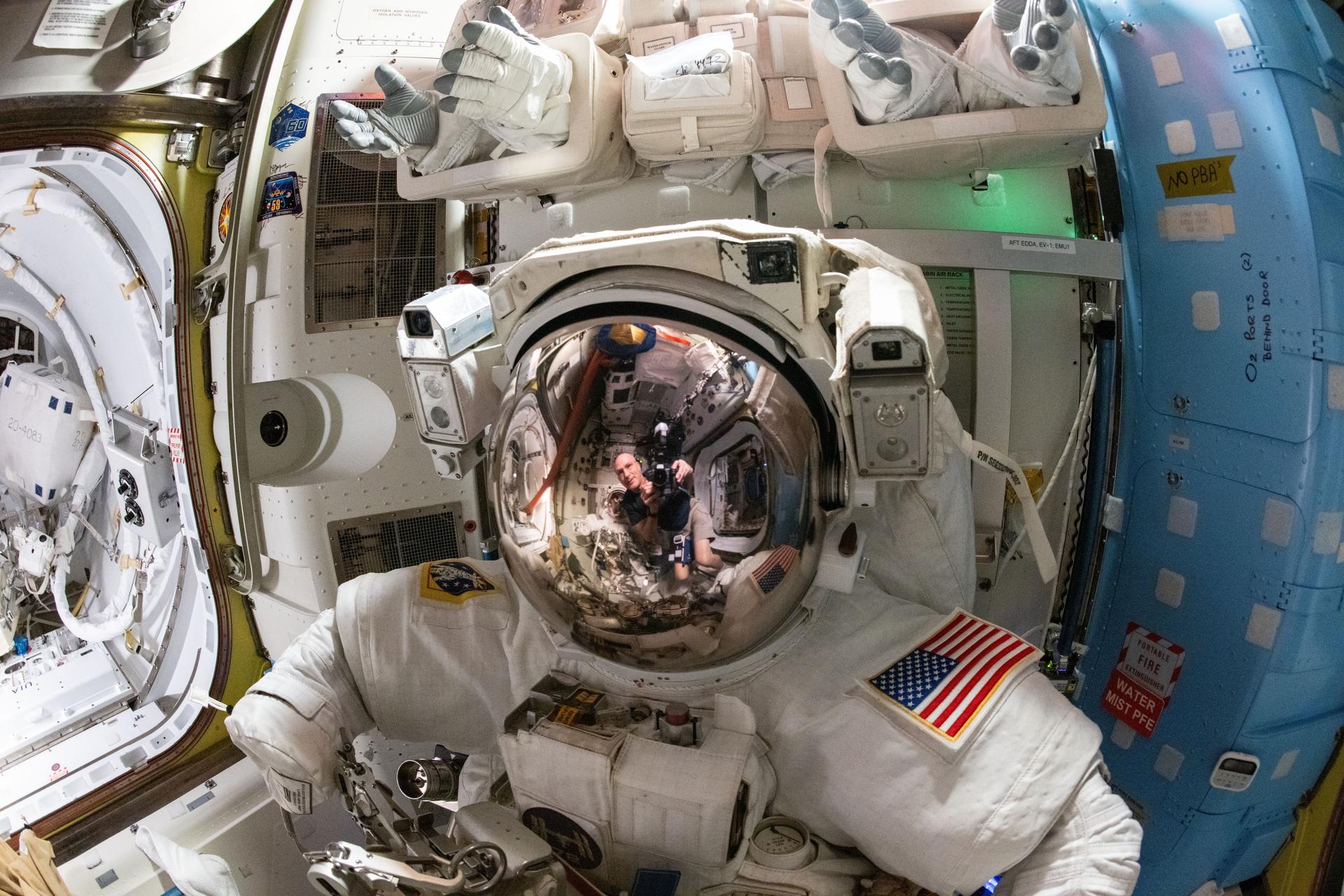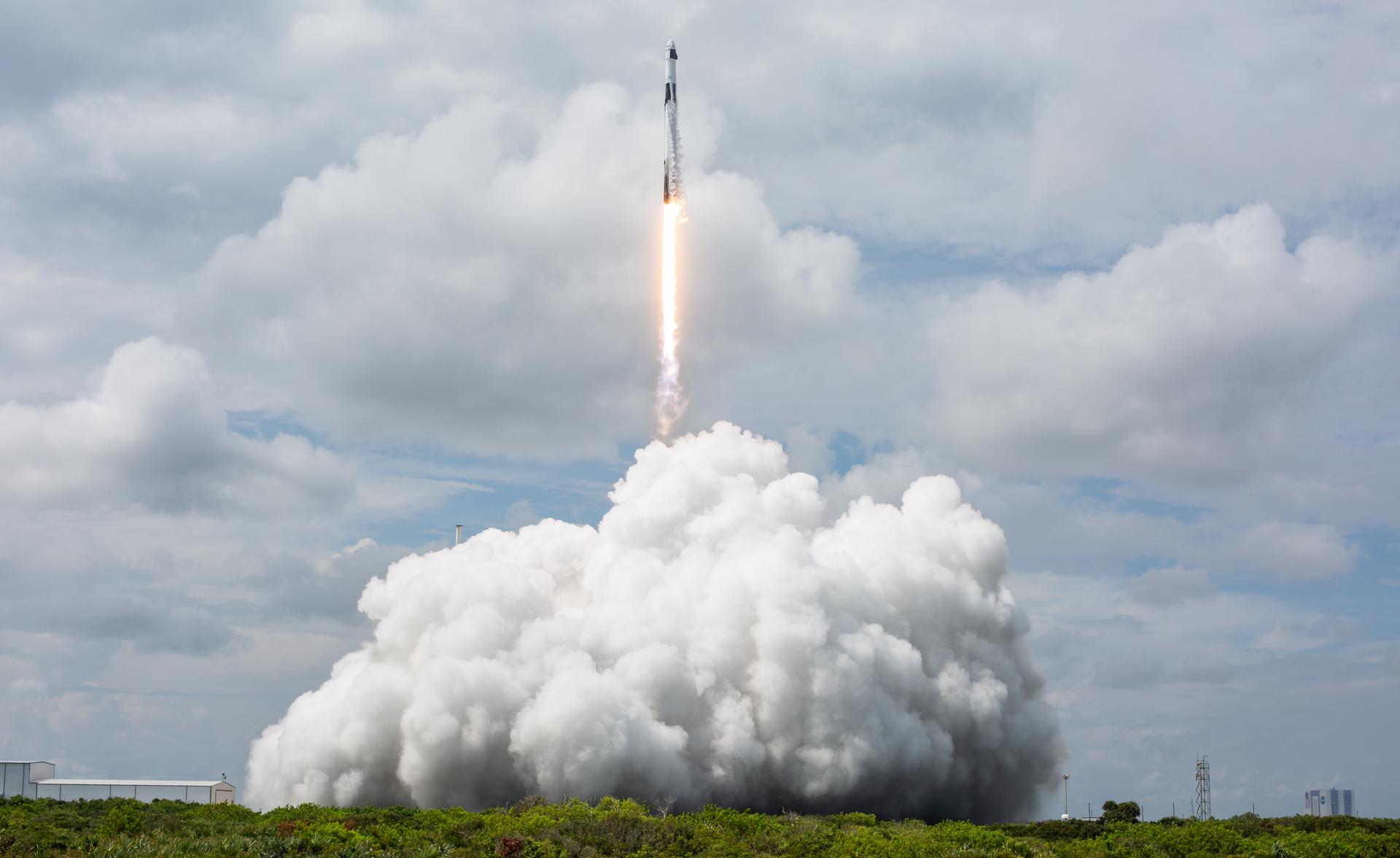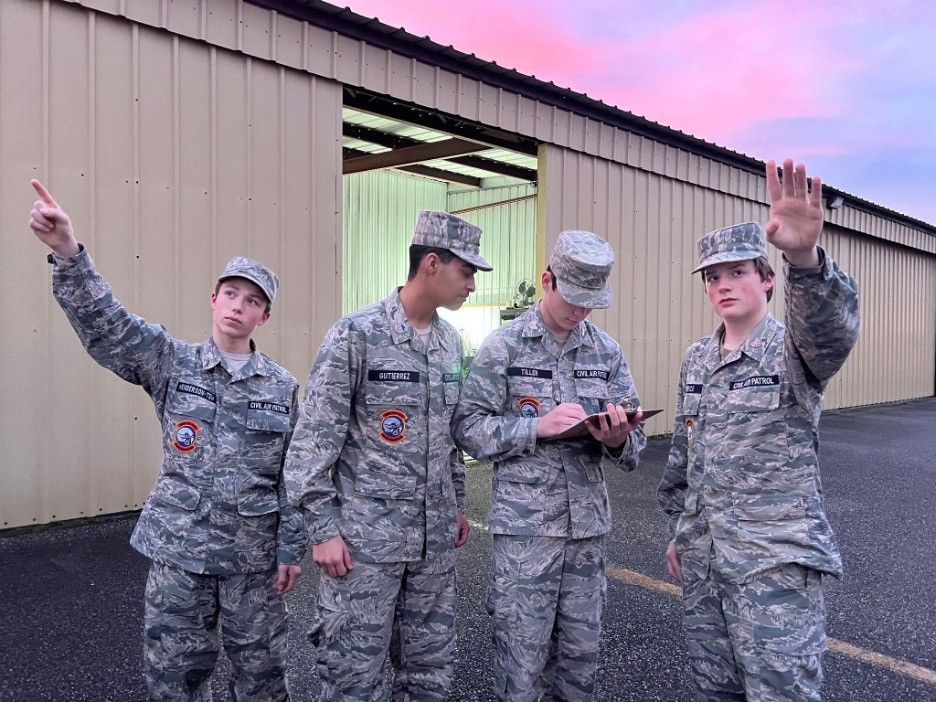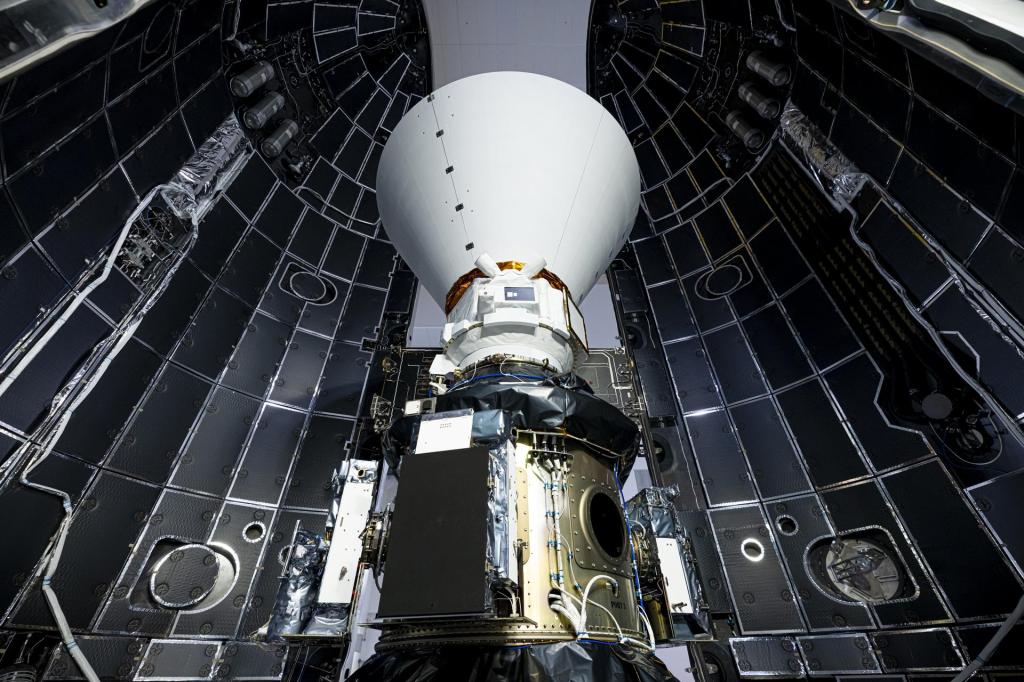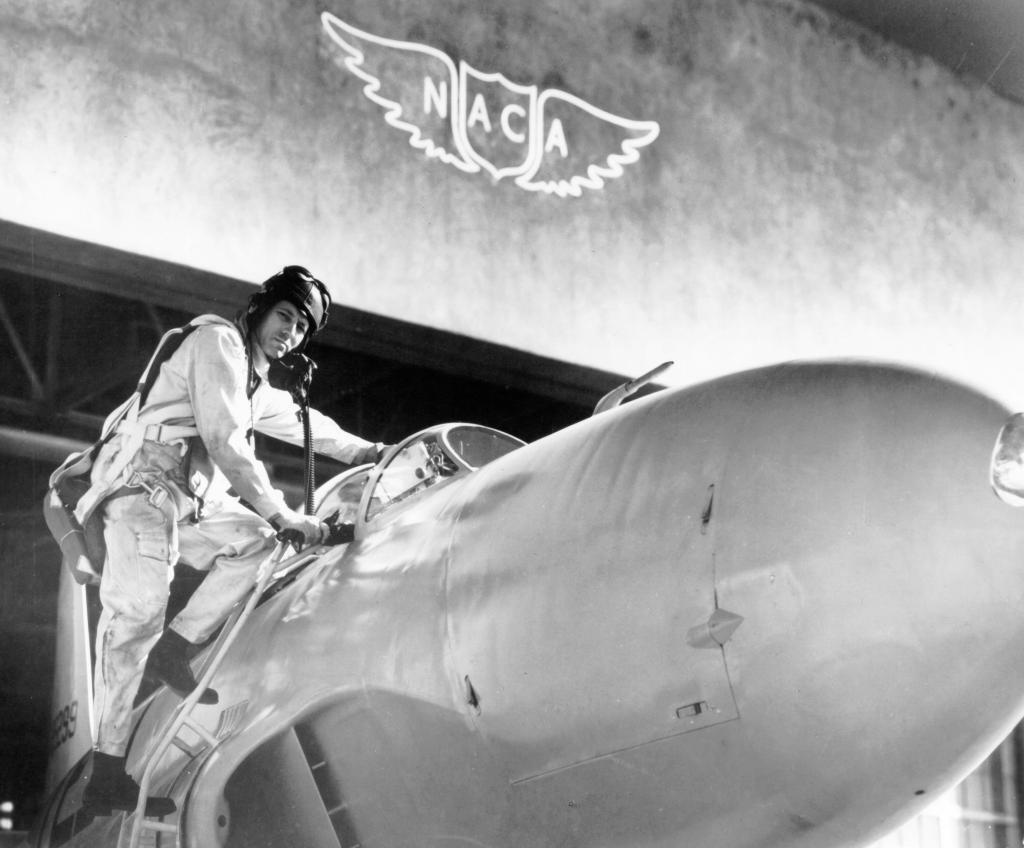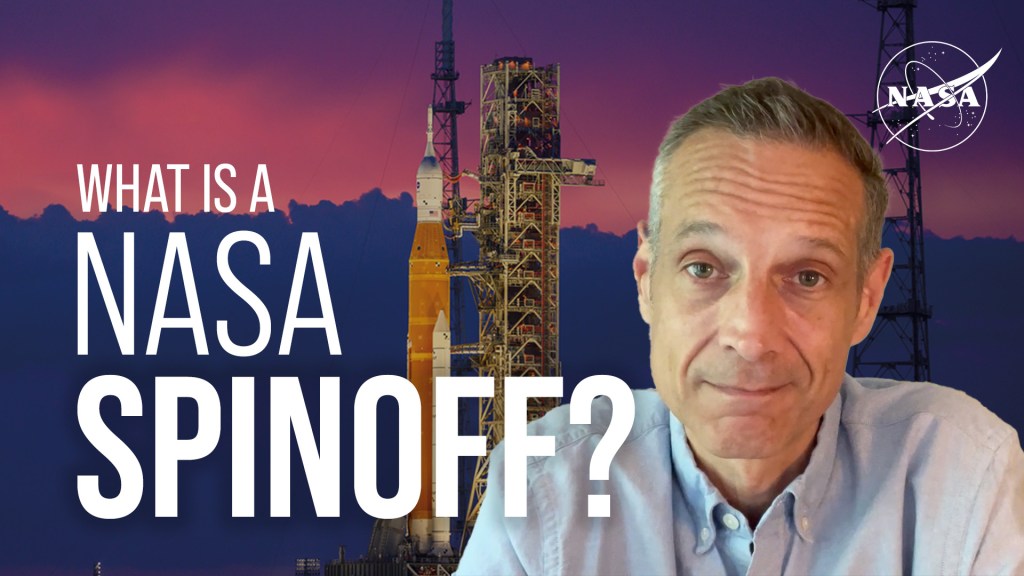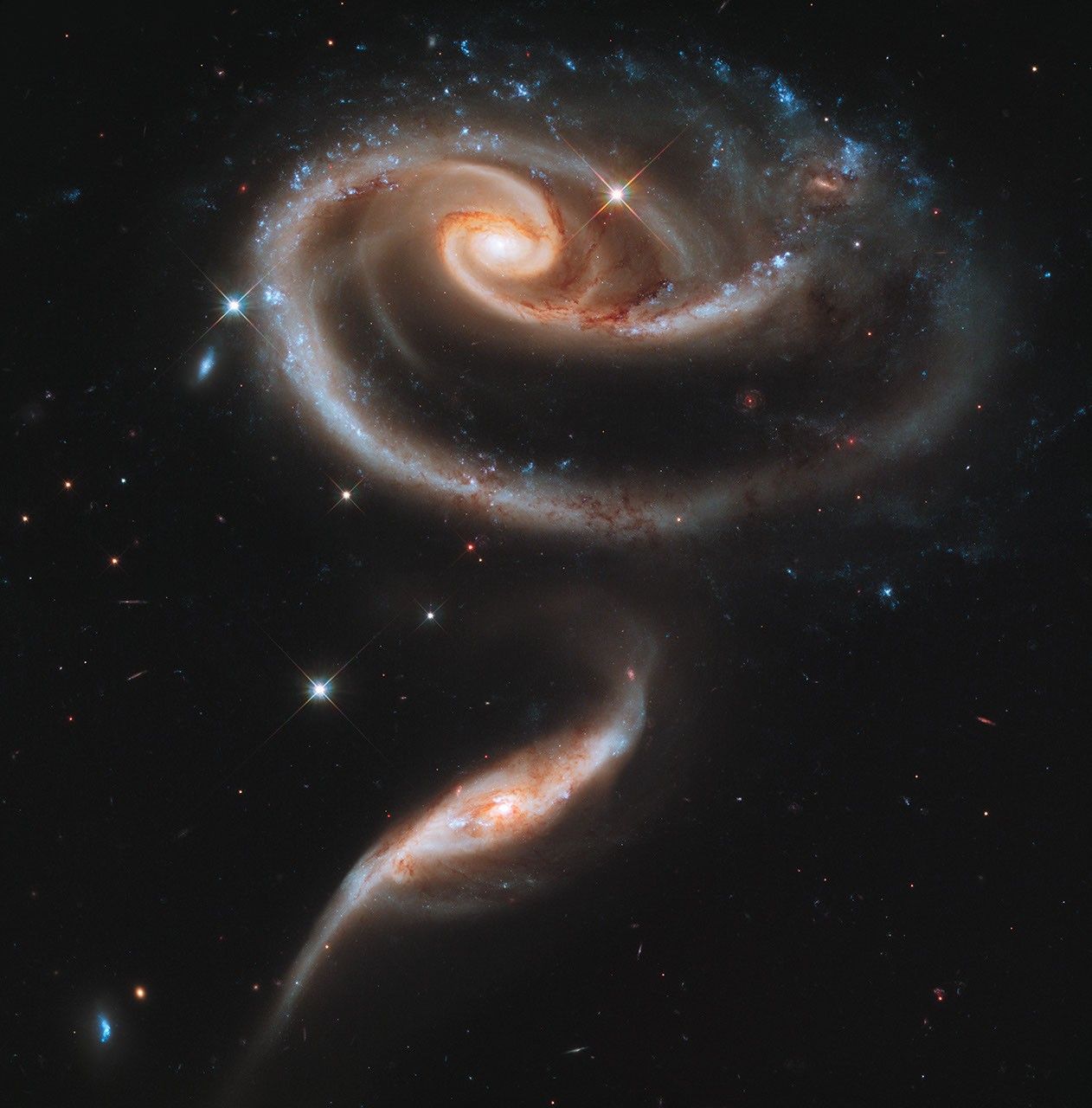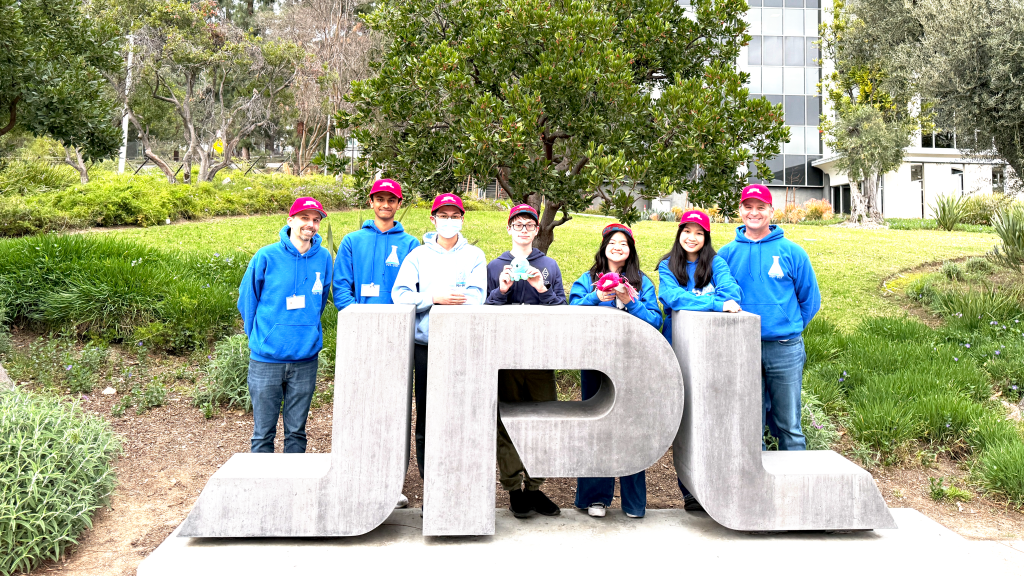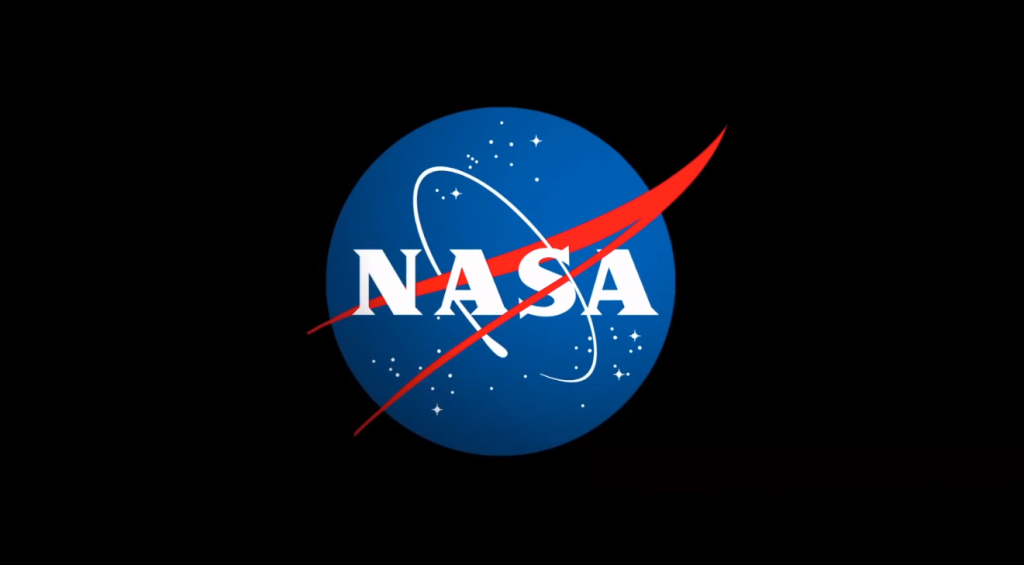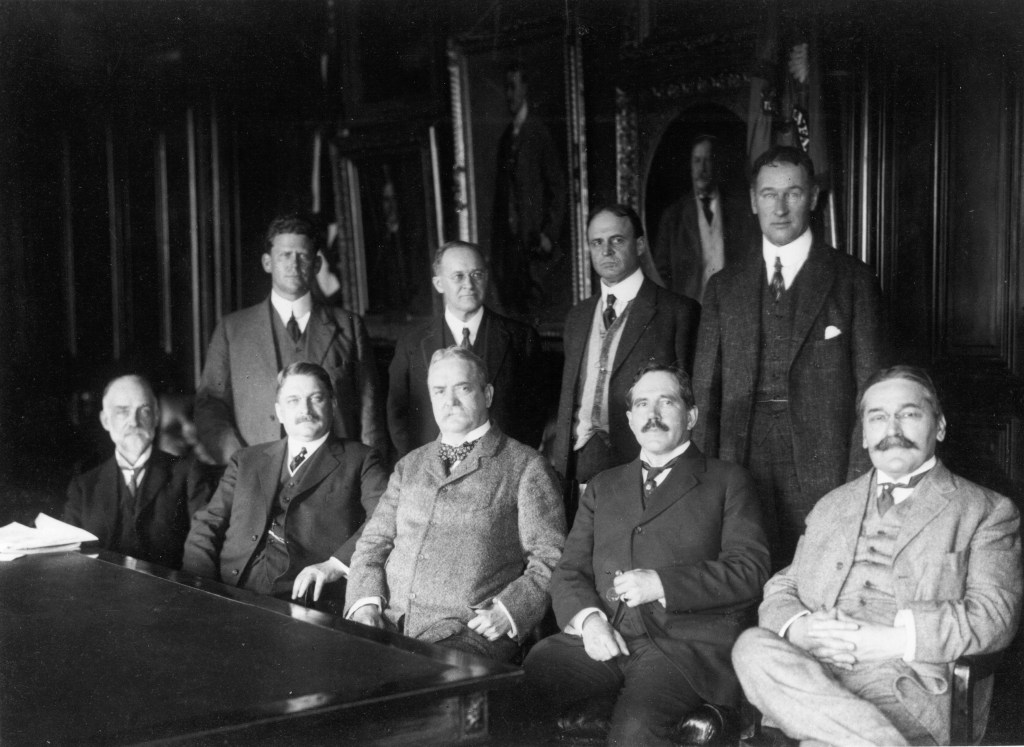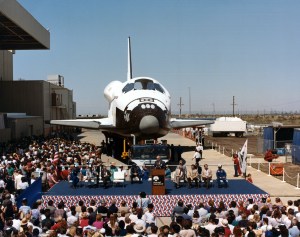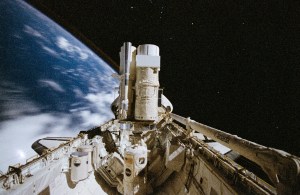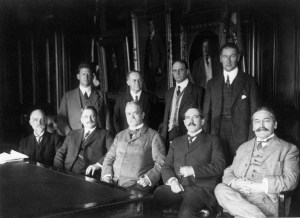This article tells the story of one small American flag fortunate enough to be singled out from a group of one thousand flags just like it and embark on an incredible journey. The other 999 flags likely ended up as gifts, but this one flag had a loftier fate. It wasn’t the first American flag to ride on a crewed spacecraft into space, that one flew aboard Freedom 7 with Alan B. Shepard on May 5, 1961. Or the most famous flag that went into space, the Stars and Stripes planted on the Moon by Apollo 11 astronauts Neil A. Armstrong and Edwin E. “Buzz” Aldrin on July 20, 1969, holds that honor. Other American flags have even flown on spacecraft not just to other planets but out of the solar system entirely. And tens of thousands of other small flags have thundered into space aboard space shuttles and returned to Earth for distribution around the world. So what makes this one small flag, known as the Legacy Flag, so special?

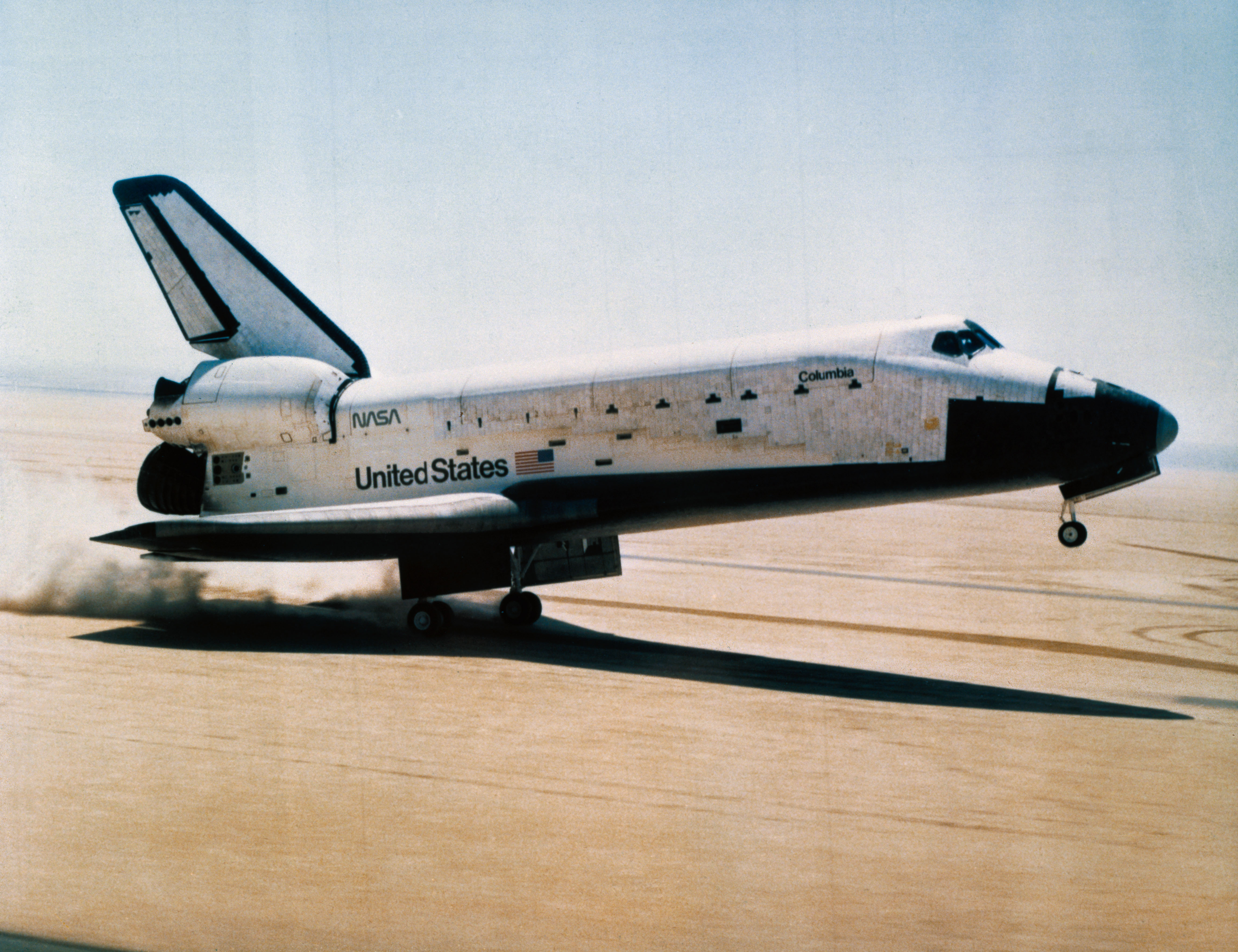
Left: Launch of space shuttle Columbia on the STS-1 mission, April 12, 1981. Right: Landing of Columbia, April 14, 1981.
Space shuttle Columbia first lifted off from NASA’s Kennedy Space Center (KSC) in Florida on April 12, 1981, to usher in a new era of reusable crewed space transportation. It carried not only its two pilots, John W. Young and Robert L. Crippen, but also the Official Flight Kit (OFK), stowed away in the lockers in the shuttle’s middeck, along with food, clothing and other supplies. Many of the OFK items, including 1,000 8-by-12-inch American flags, were destined for distribution after the mission to commemorate its historic significance. Once they returned to Earth and workers removed them from the shuttle’s middeck, NASA distributed many of the flags to various people and organizations. But some remained and ended up in storage at NASA’s Johnson Space Center (JSC) in Houston. As the shuttle program progressed over the next 30 years, the number of flags in storage dwindled as additional recipients were identified. Finally, in 2011 it was time for the last shuttle mission, STS-135, and NASA felt it a fitting tribute to refly one of the flags from STS-1 on the final flight. Since STS-135 delivered supplies to the International Space Station, the flag would remain on board until the next time an American spacecraft carrying American astronauts launched from American soil arrived at the station. At the time, no one knew exactly how long that would take.
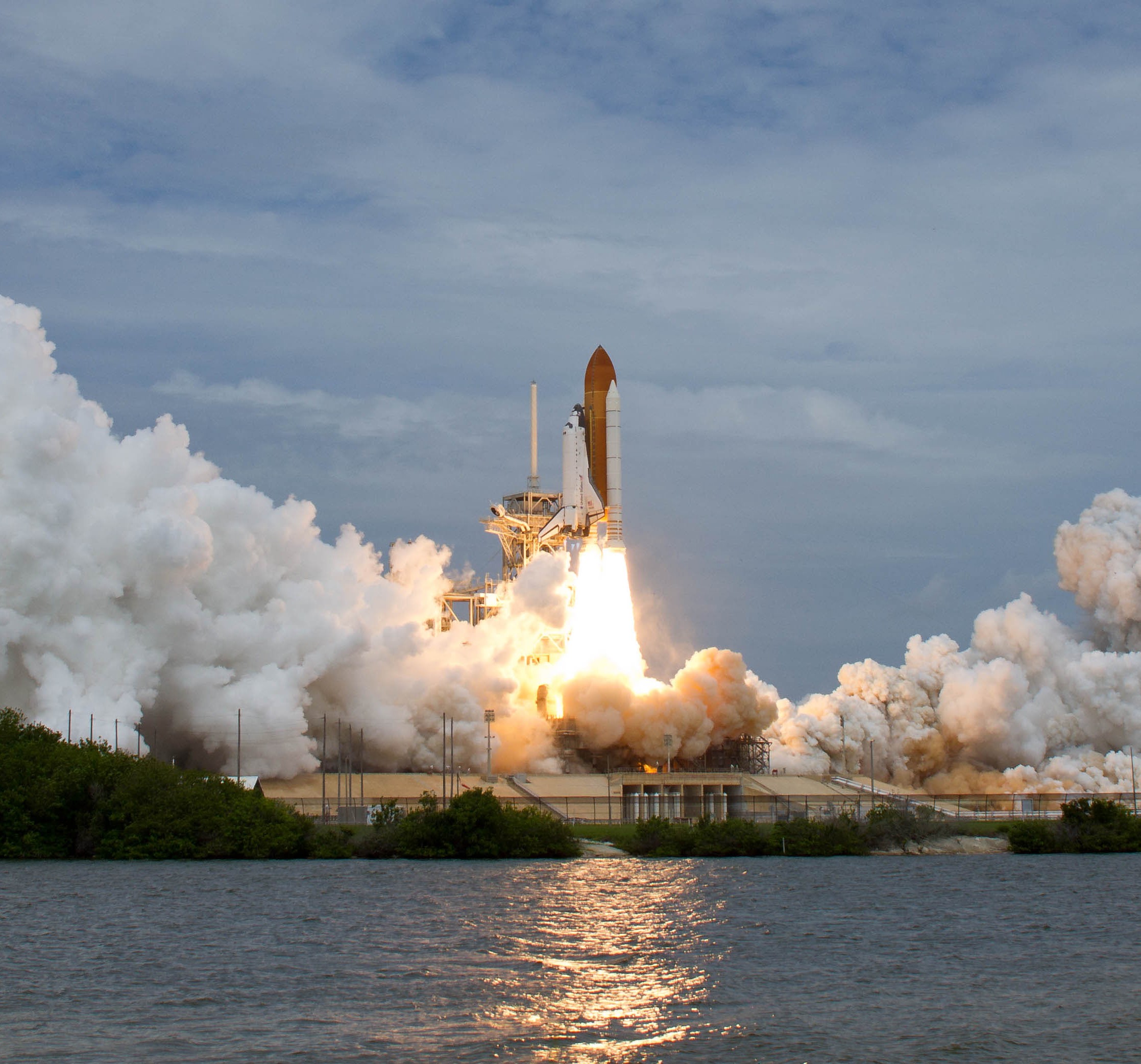
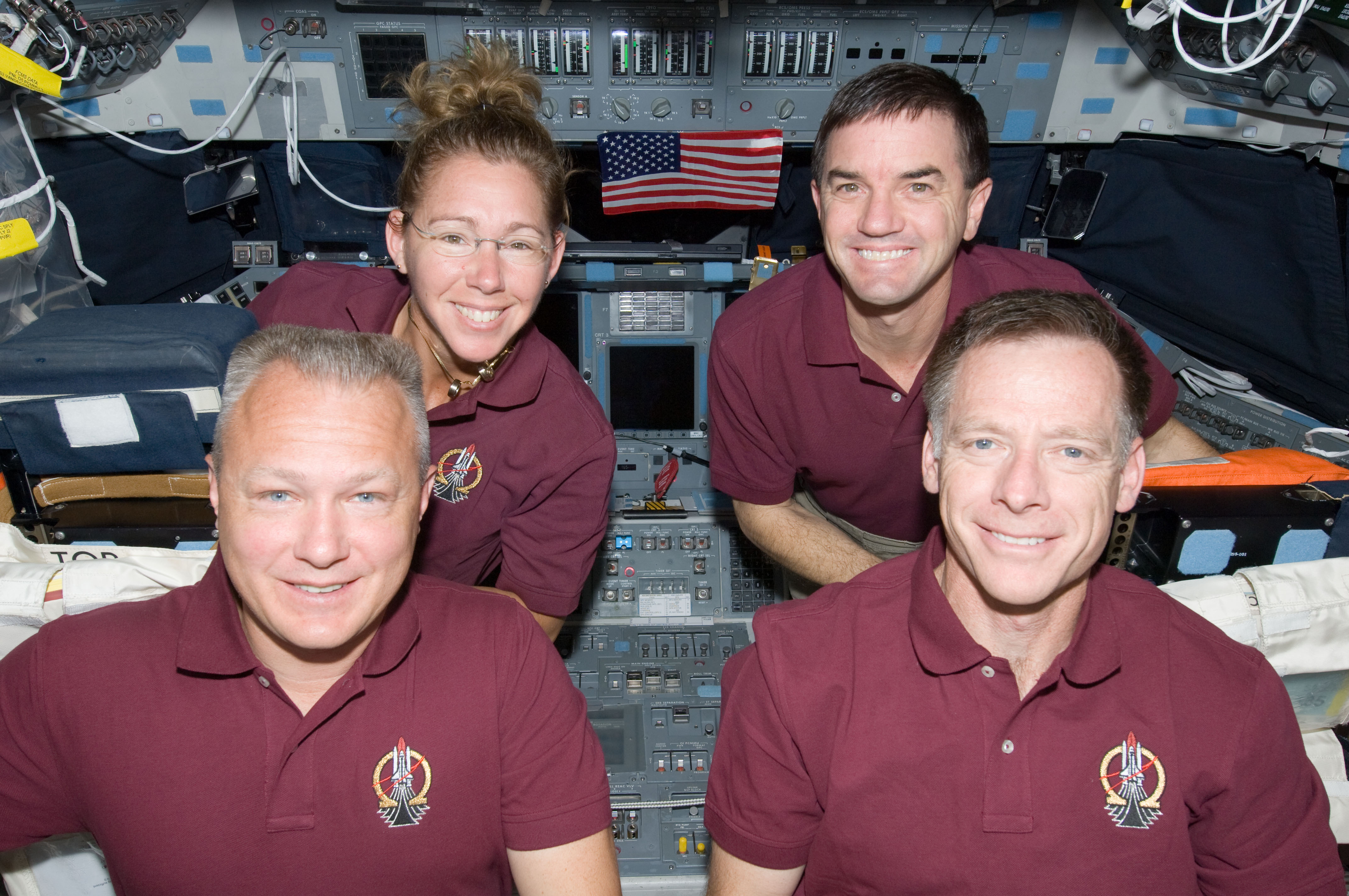
Left: Launch of STS-135, July 8, 2011. Right: The crew of STS-135 pose with the Legacy Flag on the flight deck of Atlantis.
On July 8, 2011, space shuttle Atlantis lifted off to begin STS-135, the final mission of the program with Christopher J. Ferguson, Douglas G. Hurley, Sandra H. Magnus, and Rex J. Walheim aboard, and two days later they docked with the station. The six international crewmembers of Expedition 28 welcomed them aboard. The long-term plan for the little flag was publicly revealed during a live TV session between the crew and President Barack H. Obama. “I also understand that Atlantis brought a unique American flag up to the station,” said President Obama. Shuttle Commander Ferguson explained that before their departure they would present the flag to the crew aboard the station, where “it will hopefully maintain a position of honor until the next vehicle launched from U.S. soil brings U.S. astronauts up to dock with the space station.”
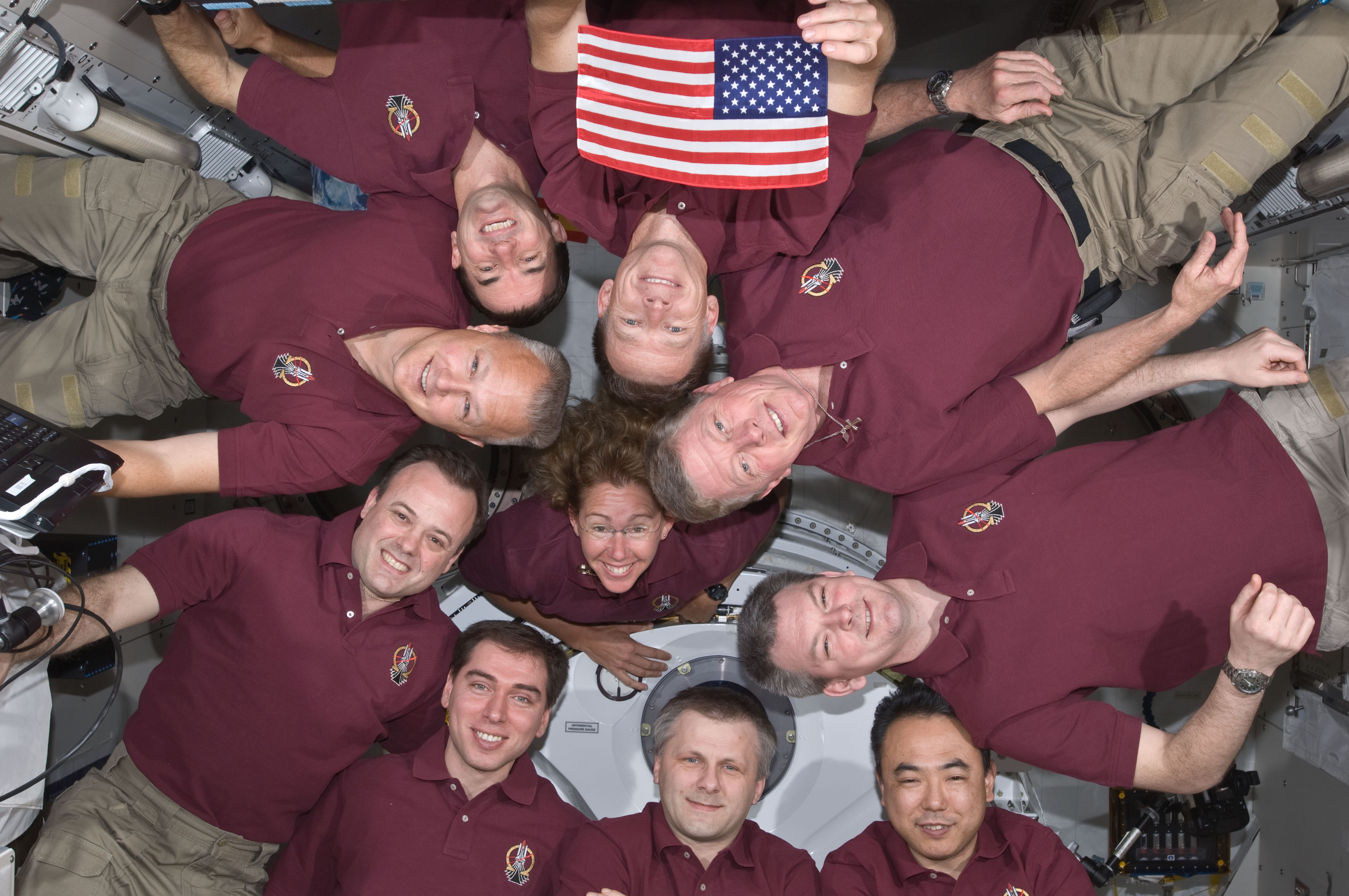
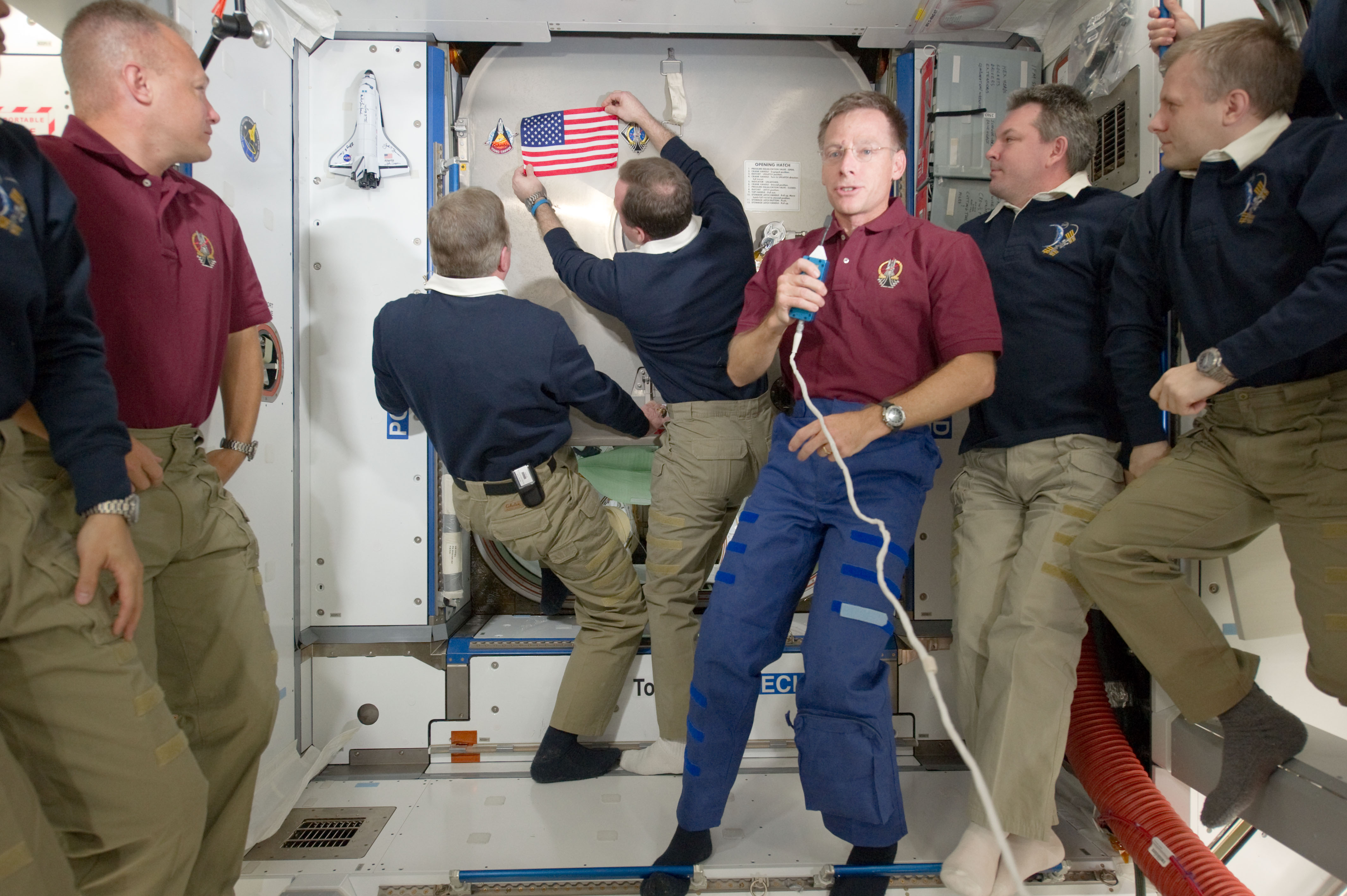
Left: The crews of STS-135 and Expedition 28 pose with the Legacy Flag. Right: The crews of STS-135 and Expedition 28 place the Legacy Flag on the hatch of the Harmony module.
On July 18, near the end of the docked phase of STS-135, during a televised ceremony the crews placed the flag, flanked by the patches of the first and last space shuttle missions, on the forward hatch of the Harmony module, from where Atlantis would soon depart and where the next American crewed spacecraft would dock. After the shuttle and its crew left, the flag remained on the hatch for a while, but as time passed, onboard crews needed to use that area for stowage and so they moved it to a nearby wall for safekeeping. In 2015, to further safeguard the flag against damage or loss, Mission Control asked the onboard crew to place it in a stowage bag. As sometimes happens with stowage bags, this one moved around and ended up in a different module of the station. Three years later, during a general inventory of stowage bags, the crew found the flag and placed in a Ziploc bag with the words “Flown on STS-1 & STS-135. Only to be removed by crew launching from KSC” attached.
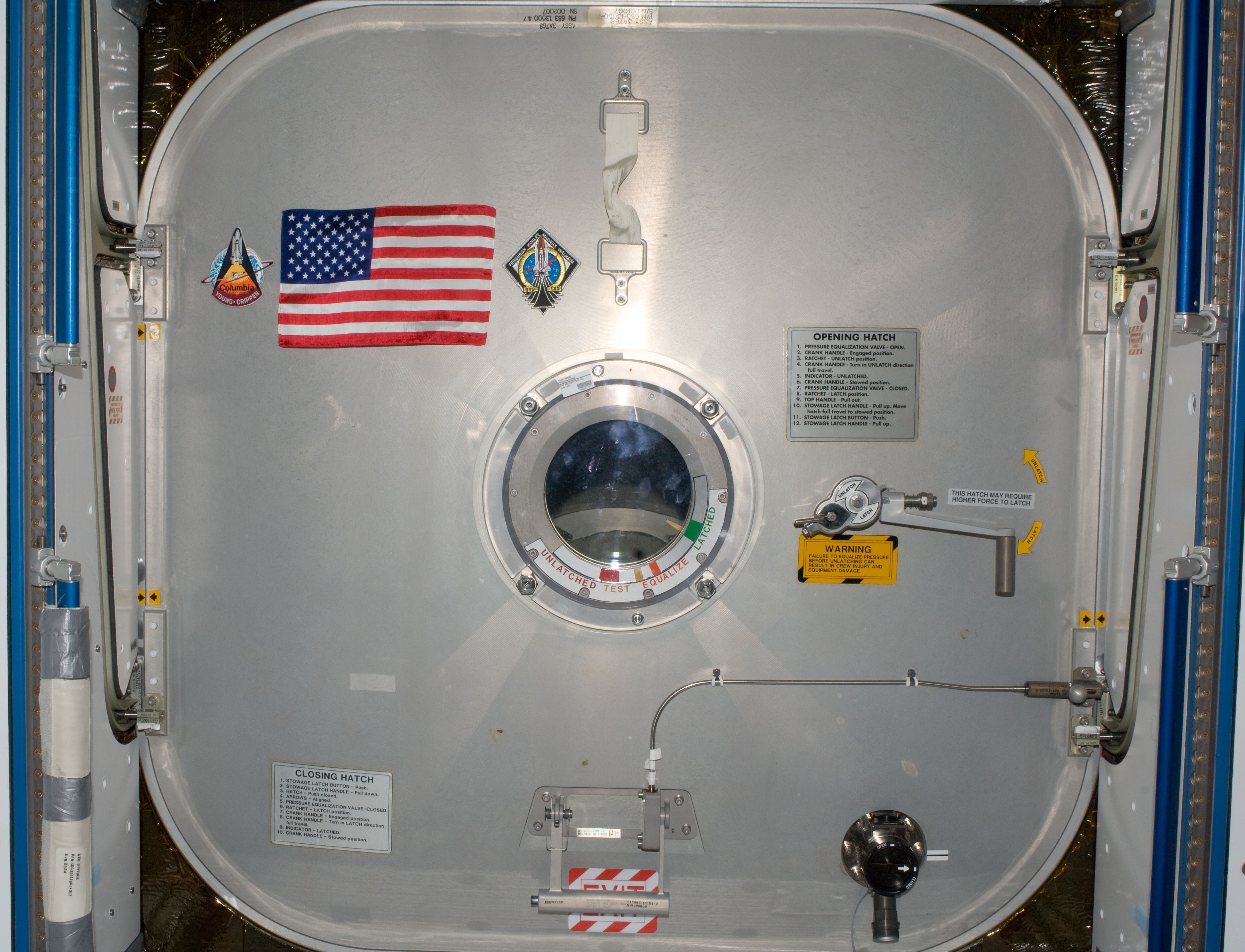
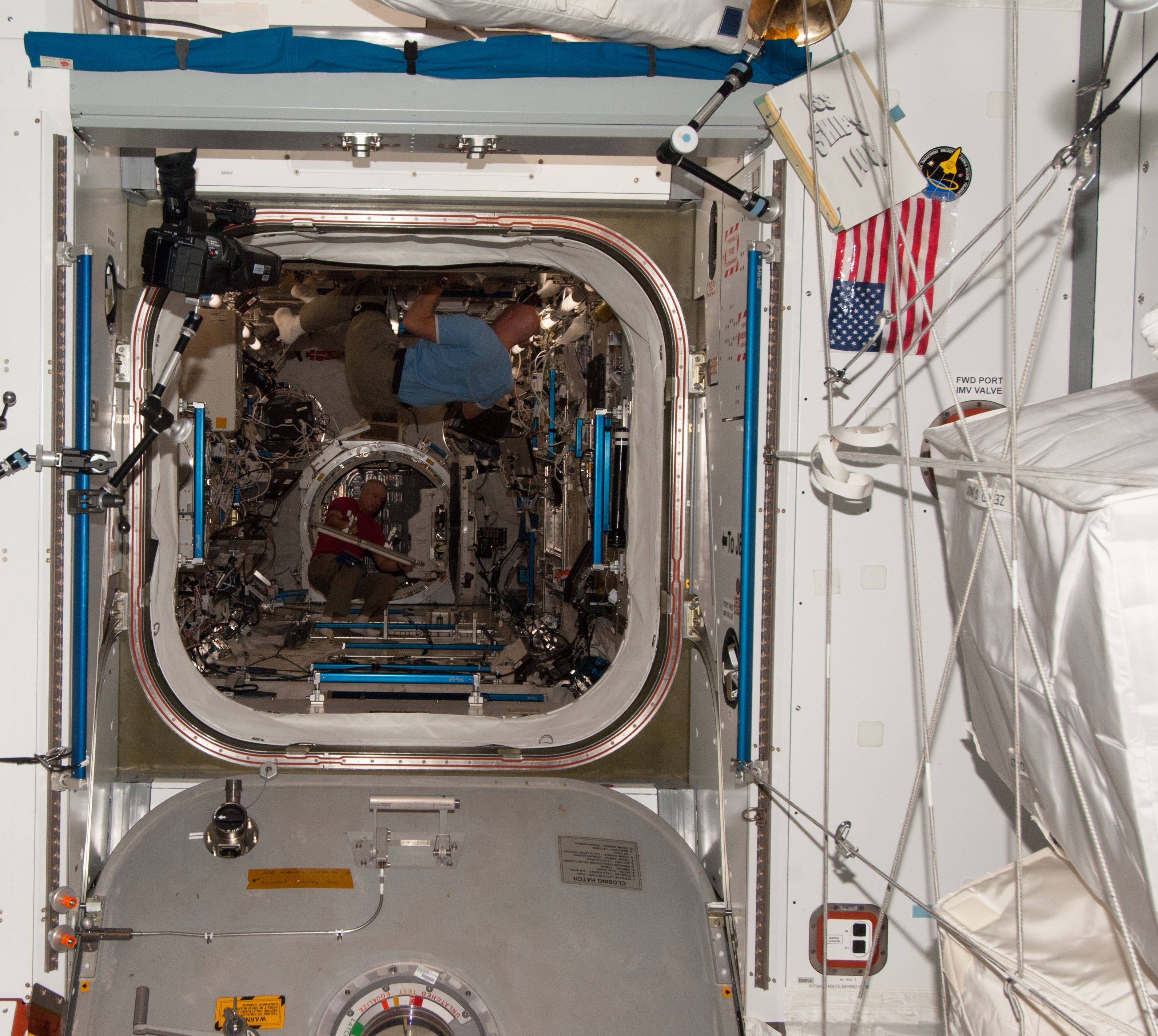
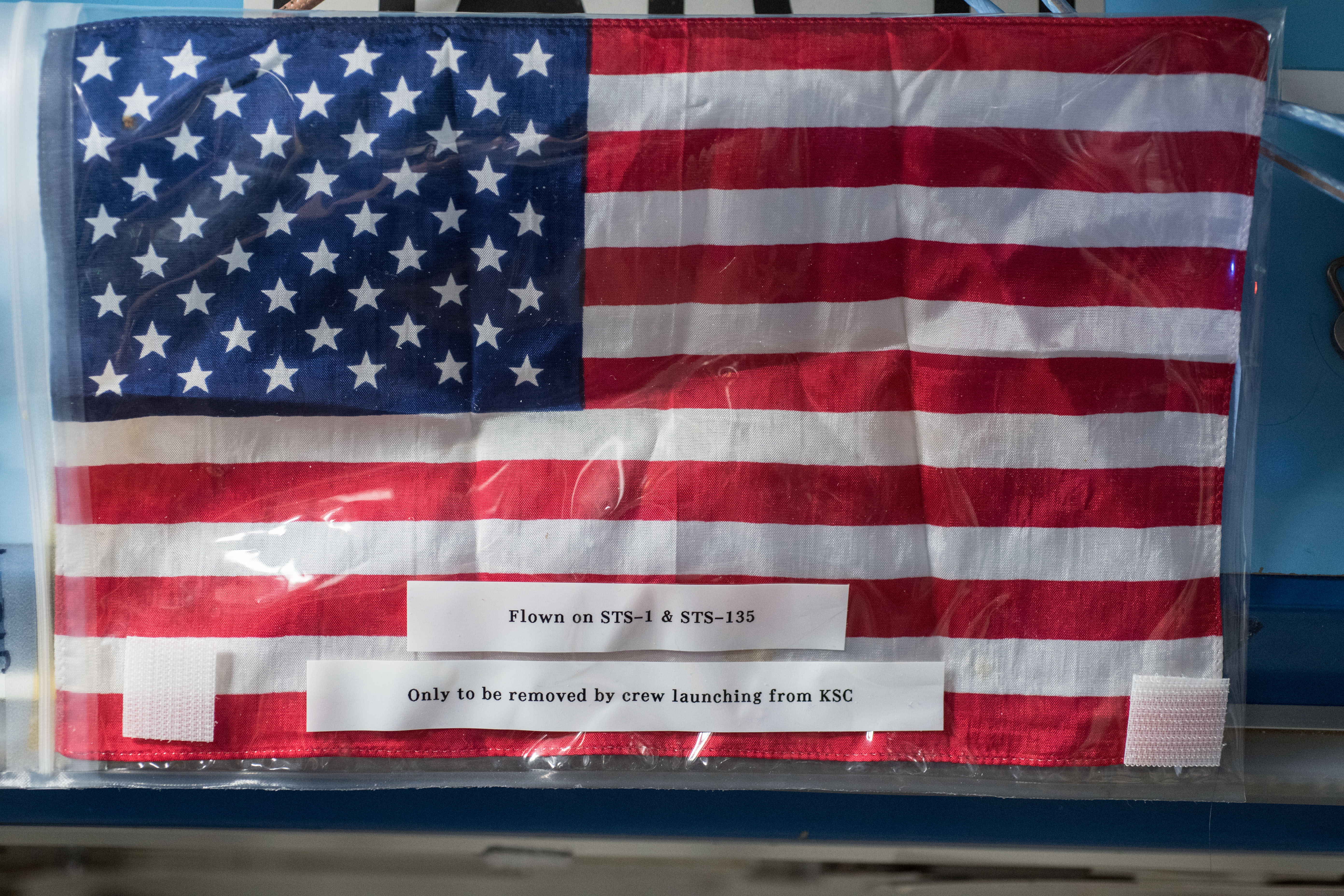
Left: The Legacy Flag, placed between the STS-1 and STS-135 patches on the Harmony module’s forward hatch as Atlantis prepared to depart. Middle: In May 2014, during Expedition 40, astronauts mounted the flag on a wall near the Harmony module’s hatch to allow that area to be used for stowage. Right: The Legacy Flag in July 2018 during Expedition 56, placed in a Ziploc bag for safety.
On May 30, 2020, a Falcon 9 rocket blasted off from KSC’s Launch Pad 39A, the same pad used for STS-1 and STS-135, carrying SpaceX’s Crew Dragon capsule on its Demo 2 mission. Aboard were Doug Hurley, who flew aboard the last shuttle mission, and Robert L. Behnken, the first American astronauts launched aboard an American spacecraft from American soil since STS-135. Once in orbit, Hurley and Behnken announced that they had christened their spacecraft Endeavour. The next day, Endeavour docked with the station, and Hurley and Behnken came aboard, welcomed by Expedition 63 Commander NASA astronaut Christopher J. Cassidy and Flight Engineers Anatoli A. Ivanishin and Ivan V. Vagner representing Roscosmos. Mounted on the open hatch as they floated aboard the station was our intrepid little flag, in space for nine years, and 39 years after making its first trip into space. After their arrival, Cassidy, Hurley and Behnken held a press conference and proudly displayed the flag and how it stood as a symbol of the return of American launch capability. The flag’s nine-year journey came to end when Hurley and Behnken brought it back to Earth on Aug. 2, 2020. The flag first went on display at SpaceX’s facility in Hawthorne, California, then toured the country for a few months, making its final public appearance at the World Petroleum Congress in Houston in December 2021. Currently in storage at JSC, the Legacy Flag will fly again, possibly on even more distant journeys.
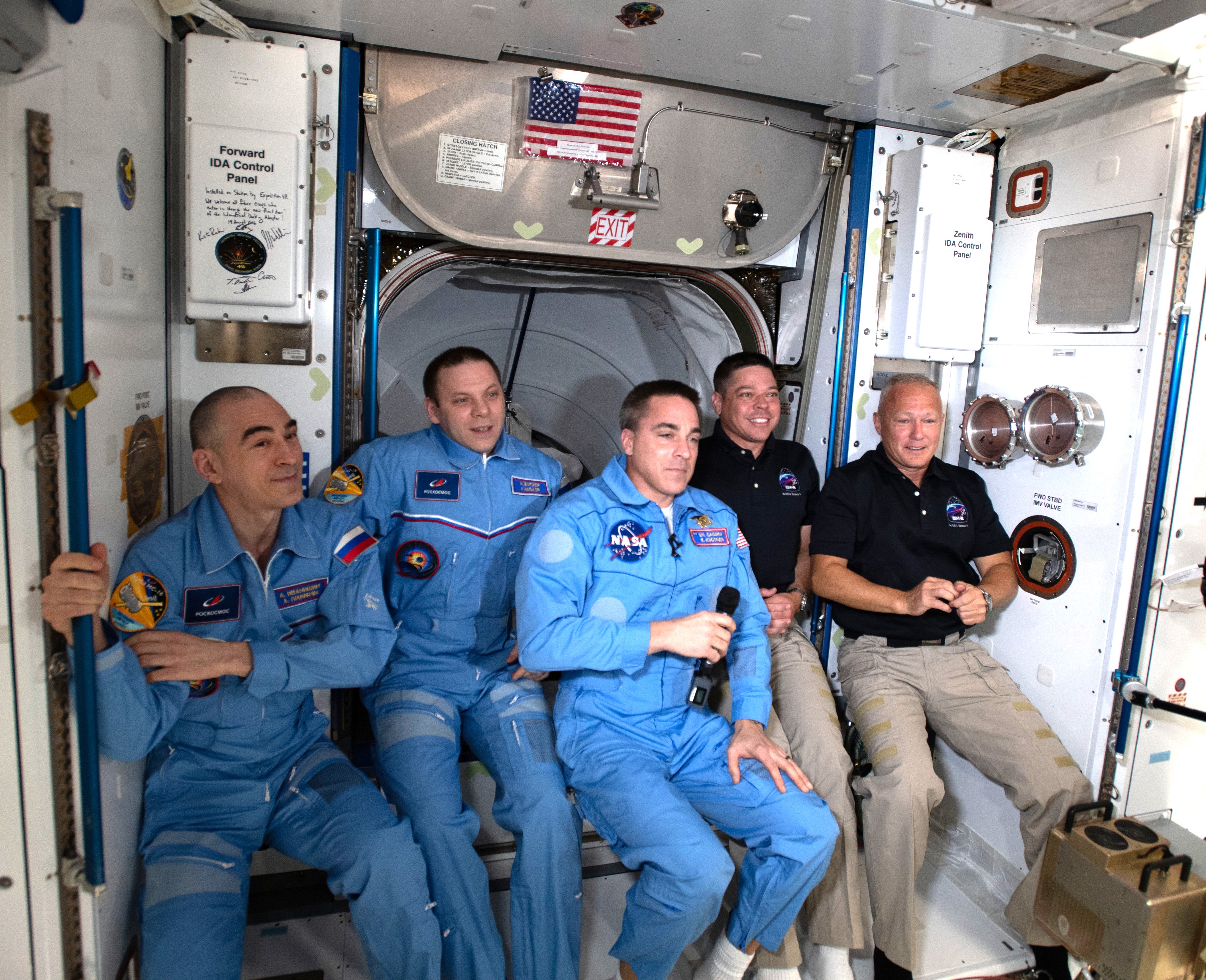
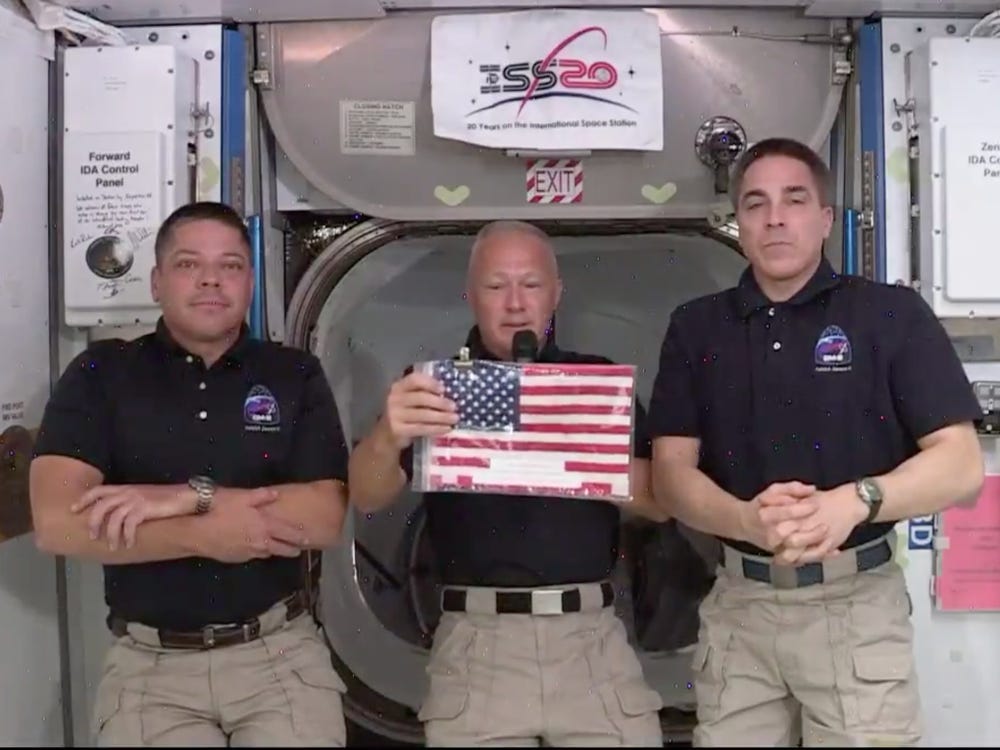

Left: The Harmony module’s forward hatch bearing the Legacy Flag, opened to welcome the SpaceX Demo 2 crew. Middle: NASA astronauts Robert L. Behnken, left, Douglas G. Hurley (holding the Legacy Flag), and Christopher J. Cassidy during a press conference. Right: The Legacy Flag in its display case after its return to Earth.
During its time on the space station, the Legacy Flag saw 100 visitors from many nationalities come and go, some of them more than once. Most stayed six months, some stayed longer, up to almost one year. A few made short visits of about a week. During all that time, the space station remained a busy beehive of activity, with hundreds of experiments conducted by the international crews. Many astronauts ventured outside, to repair equipment, place new experiments out, or bring older ones back inside. And in that time, the flag traveled more than 1.3 billion miles.

